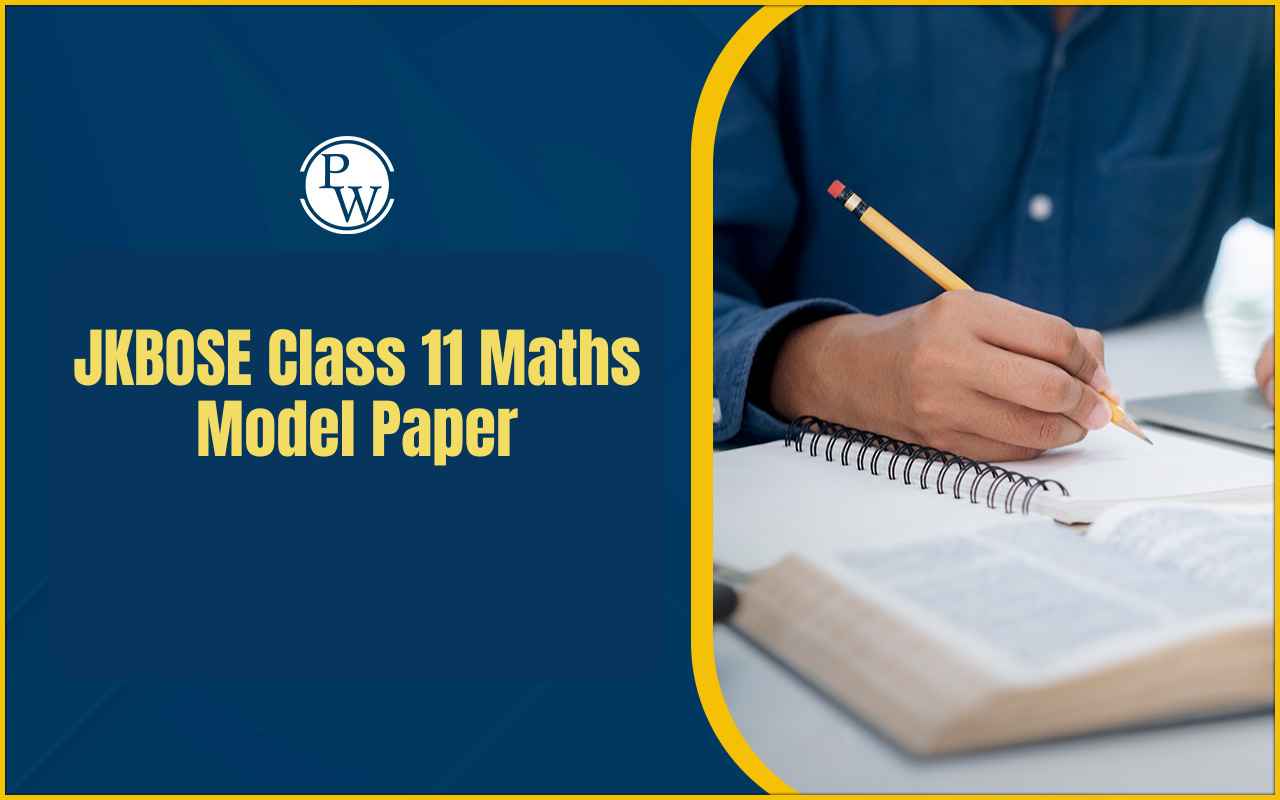
JKBOSE Class 12 Physics Syllabus 2025: The syllabus has been introduced by the JKBOSE to help students prepare for the board exams. As Physics is a compulsory subject for science stream students, it becomes mandatory for them to understand the exam pattern and the types of questions to prepare.
The syllabus for Physics includes nine units which includes various sub topics such as Electrostatics, Current Electricity, Magnetic Effects of Current and Magnetism. These units are included in the syllabus with the aim to develop conceptual understanding and practical knowledge for competitive exams.
JKBOSE Class 12th Supplementary Exam Timetable for 2025
JKBOSE Class 12 Physics Syllabus 2025 Highlights
The JKBOSE Class 12 Physics Syllabus 2025 aligns with the NCERT guidelines, preparing students for both board exams and competitive exams like JEE. Here are the highlights of the science stream subjects which students must refer to, before deciding their subjects:
JKBOSE Class 12 Physics Syllabus 2025 Exam Pattern
The JKBOSE Class 12 Syllabus 2025 Exam Pattern includes the types of questions to be prepared for the exam. It also includes the weightage of marks for each type of question, allowing students to understand the importance of knowing the exam structure, mark distribution, and the level of difficulty expected in each section.
The exam pattern helps students prepare for the exam thoroughly while focusing on effective time management. It also showcases that students must give importance to both theory and practical components.
JKBOSE Class 12 Physics Syllabus 2025 PDF Download
The JKBOSE Class 12 Physics Syllabus 2025 allows students to strategize their study schedule. They can plan their study time accordingly by focusing on the important and key concepts. It ensures that every unit is covered with proper practice. For easy access, the official PDF has been attached below:
Do you need help with your homework or preparing for exams?
Study without using the internet
JKBOSE Class 12 Physics Syllabus 2025 Marking Scheme
JKBOSE Class 12 Physics Syllabus 2025 Marking Scheme gives a brief overview of the important units and topics students must cover in order to score well. As the written exam carries 70 marks, students must focus on scoring units and units which carry higher marks like Unit 6- Optics.
Unit 6 i.e. Optics carry the highest marks of 14. Students must properly understand the concerts and practice them through previous years’ papers. Students must analyze the exam pattern given by the JKBOSE board to prepare accordingly for the exams.
The JKBOSE Class 12 Physics Syllabus 2025 Marking Scheme is given below for reference:
|
JKBOSE Class 12 Physics Syllabus 2025 Marking Scheme |
||
|
Unit Names |
Sub Topics |
Marks Allotted |
|
Unit I: Electrostatics |
Electric Charges and Fields |
09 |
|
Electrostatic Potential and Capacitance |
||
|
Unit II: Current Electricity |
Current Electricity |
07 |
|
Unit III: Magnetic Effects of Current and Magnetism |
Moving Charges and Magnetism |
09 |
|
Magnetism and Matter |
||
|
Unit IV: Electromagnetic Induction and Alternating Currents |
Electromagnetic Induction |
09 |
|
Alternating Current |
||
|
Unit V: Electromagnetic waves |
Electromagnetic Waves |
03 |
|
Unit VI: Optics |
Ray Optics and Optical Instruments |
14 |
|
Wave Optics |
||
|
Unit VII: Dual Nature of Radiation and Matter |
Dual Nature of Radiation and Matter |
04 |
|
Unit VIII: Atoms and Nuclei |
Atoms |
08 |
|
Nuclei |
||
|
Unit IX: Electronic Devices |
Semiconductor Electronics |
07 |
|
Total |
70 |
|
The syllabus also includes a practical assessment for 30 marks which are further divided into external and internal assessment. The external assessment (20 marks) includes experiments and activities which students must attempt to score well in the exams.
JKBOSE Class 12 Physics Syllabus 2025 Recommended Books
Students must study from the books entioned in the JKBOSE Class 12 Physics Syllabus 2025. It gives a structured preparation for the exams. One book included in the syllabus by the JKBOSE is ‘A textbook of Physics for Class XII published by NCERT, New Delhi.’
This book is NCERT based and gives clear explanations with well-defined diagrams and a variety of solved and unsolved questions that align with the JKBOSE exam pattern.
In the exams, questions directly come from the NCERT or based on the concepts given in the NCERT. Students must study from the NCERT for both board exam preparation and competitive exams preparation.
JKBOSE Class 12 Physics Syllabus 2025 Benefits
-
The syllabus allows students to understand the unit-wise marking scheme to focus on high weightage units like Optics (14 marks), Electrostatics (9 marks), and Electromagnetic Induction & AC (9 marks).
-
The official syllabus mentions NCERT as the sources of knowledge for students. Students must follow the NCERT as it explains every concept in detail with the help of examples and well-labelled diagrams. Most of the questions in the exam directly or indirectly come from the NCERT. Students must understand the chapter, diagrams, and the derivations included in it.
-
Units like Current Electricity and Magnetism require practice as they include numericals. Practice of numericals must be done from previous years’ papers to understand the level of difficulty. Students must give time to each unit based on its marking scheme.
-
As the syllabus gives importance to practical experiments as well, students must prepare procedures, experiments and activities thoroughly as it carries 20 marks.
-
Students must prepare chapter-wise notes for every unit with definitions, formulas, key points, and diagrams for quick revision.
JKBOSE Class 12 Physics Syllabus 2025 FAQs
What is the syllabus of class 12th physics?
What are the optional subjects in 12th science?
Is class 12 physics very tough?
Has the JKBOSE Class 12 Physics syllabus changed for 2025?
Where can I download the JKBOSE Class 12 Physics syllabus 2025 PDF?










